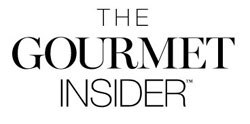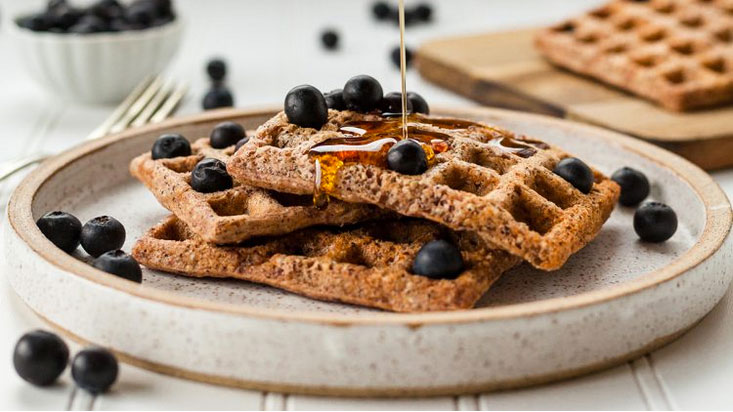Portfolio
Eight Tricks For Baking Gluten-Free Like a Pro

Here’s the fact of the matter: Cookies, pastries, bread, muffins, cakes, pizza crust, and other scrumptious baked items we love revolve around wheat. This regular wheat flour contains gluten, a substance that holds these yummy baked goods together and gives them that light, tender texture and structure we know and adore.
So, what are people with a gluten sensitivity or Celiac Disease supposed to do, not eat cookies ever again? Thankfully, no! While you don’t have the luxury of using regular flour when you’re baking gluten-free, grocery stores have luckily come a long way in offering great gluten-free flour alternatives — and once you learn a few tricks and trial-and-error adjustments for baking gluten-free, you won’t even miss those wheat flour English muffins.
To get you started, we grabbed some tips from the pros who offer their best tips on learning to bake gluten-free like, well, a pro.
Change Your Baked Goods Expectations
“When you first start baking gluten-free, you have to throw out a lot of what you think baked goods should look and act like,” explains Lynn Seery, owner of Pure Love Bakery in Avon, CT. For instance, bread may not rise quite as high, cookies may be flatter, and biscuits may not brown the same way.
Additionally, wheat flour is known and used for its consistency. Gluten-free flours, however — whether it be almond flour, oat flour, or another alternative — all have different tastes, textures, and behaviors.
Gluten-free recipes just won’t have the same taste and texture as the “regular” recipes — which is OK! If you’re willing to practice, make some adjustments, and be open-minded, you’ll have some delicious gluten-free baked goods in your future.
Stock up on gluten-free baking essentials
Gluten-free grocery items can run you a pretty penny more than the regular version. To ensure you don’t go broke buying all the gluten-free flours in existence, Seery suggests that instead, you stock your gluten-free pantry with the following items, which allow you to tinker with recipes and get the desired “regular” texture you crave:
- All-purpose gluten-free flour (like King Arthur Gluten-Free All-Purpose Flour)
- Superfine brown and white rice
- Potato starch
- Tapioca starch
- Sorghum
- Xanthan and guar gums (for a light, fluffy texture and amazing chew)
- Almond flour
- Sweet rice flour (for chewiness)
- Millet flour (for bread)
- Arrowroot or cornstarch (for thickening or more tender baked goods)
- Oat flour (in small amounts to add fiber and structure)
Weigh Your Gluten-Free Flour
Generally speaking, accurate measuring in baking is key for a delicious final product, but in the case of gluten-free baking, this is true tenfold because your margin of allowed error is much smaller. “Gluten-free flours can be fickle,” says Larissa Wilson, owner of Hannah’s Gluten-Free Bakery in Mesquite, TX. “Just a couple teaspoons more than your recipe requires can ruin it.”
Depending on how you scoop regular wheat flour to measure it — packing it tight, scraping the top with a knife — it’s hard to be exact and consistent, which is why when you’re baking with gluten-free flour, “investing in a good food scale is a must,” says Wilson.
Depending on your gluten-free flour alternative of choice, the ideal weight measurement can vary a little, so be sure to cross check with this flour weight chart.
While You’re At It, Cut Out Dairy, Too
“Many people with a gluten allergy also have additional food allergies, with dairy being the most common,” explains Seery. Consider substituting any dairy-based fat choices that the original recipe calls for with something dairy-free and similar in texture. Seery swears by these substitutions:
- Replace melted butter with melted coconut oil or sunflower oil
- Replace creamed butter with Earth Balance sticks or cold coconut oil
- Replace Crisco with organic sustainable palm shortening
- Replace whole milk with canned coconut milk
Prepare To Tinker With Wet Ingredients
One of the hardest parts of gluten-free baking is creating that desired final texture of a regular chewy cookie or a soft loaf of bread. “Many gluten-free flour blends are ‘thirsty’ and soak up a larger amount of fluid,” explains Wilson. “You may need to add a little more of your wet ingredients than your recipe calls for.”
Utilize A Cooling Rack
When your hot baked goods are ready to come out of the oven, don’t let them sit and cool in a pan. The starch and xanthan gum used in your gluten-free recipe are notorious for holding onto moisture — and if your cookies or muffins get that steam trapped inside of them, prepare yourself for a gummy bite of pastry. Always allow items to cool completely on a wire cooling rack as soon as they come out of the oven.
Start With A Gluten-Free Cookbook
Arming yourself with a gluten-free cookbook is a great way to learn techniques of the trade and add a ton of yummy, tested-and-perfected recipes to your repertoire. Seery’s favorite: The How Can It be Gluten Free Cookbook by America’s Test Kitchen.
Accept And Repurpose Your Mistakes
Just accept the fact you’re going to bake a lot of bricks before finally perfecting your gluten-free banana bread recipe. “Don’t be discouraged by your mistakes and if [a recipe] doesn’t work out, try to use what you’ve made for another purpose,” says Wilson.
Portfolio> Home>
Client: The Gourmet Insider
Date: November 13, 2020
Service: Copywriter
